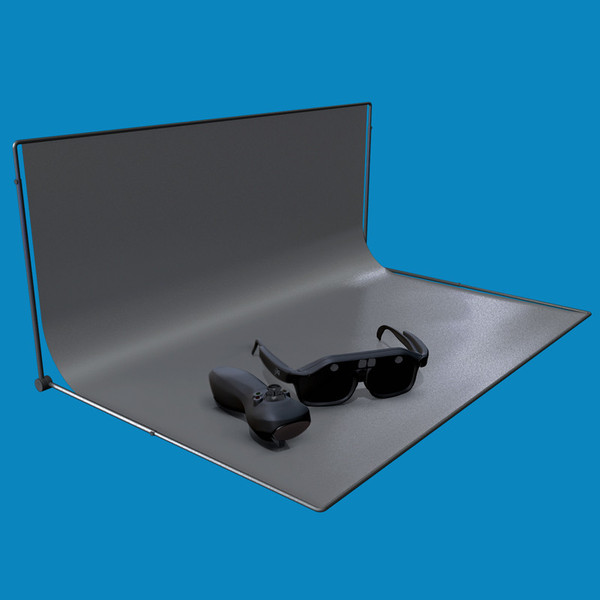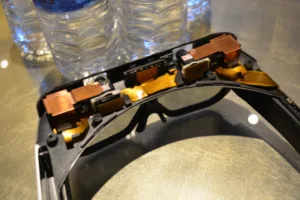TechnicaI Illusions (Woodlinville, WA) used a suite at CES 2015 to offer private demos of it CastAR headset. The company opened a Kickstarter campaign last fall with the goal of raising $400K, but got to just over $1M before the round closed. Now, the founders are working to develop the products to deliver to its supporters.

As reported in an article last October (CastAR Shows New Augmented Reality Headset Prototype), the system consists of a pair of pico-projectors mounted on top of a pair of 3D shutter glasses. Each 720p pico-projector projects one perspective view of a stereoscopic 3D image onto a surface. Both images are updated 120 times per second. When the left eye LCD shutter is closed, the right projector is on and vice-versa. In this way, the user will perceive stereoscopic 3D imagery.
A tiny camera is placed between the projectors to scan for infrared identification markers placed on a special retro-reflecting surface. When found, the camera uses these markers to track the user’s head position in the physical world with sub-millimeter accuracy. Since the system is capable of tracking at 120 hertz, the software is able to adjust the stereoscopic images in real time so that they properly correspond to the user’s orientation. The camera is connected via a USB port on the PC, while the video signal is provided to the glasses through an HDMI connection.
The system allows the overlay of virtual images or data onto real objects if placed on the retro-reflective surface. This surface returns light to the user’s eyes from the pico projectors and helps to mitigate loss of contrast due to ambient illumination. Multiple users can interact with the same image/model without interfering with each other and all will get the same perspective not matter where they are located.
Apparently, early prototypes have now been completely redesigned after the company went to Japanese suppliers for optical elements. A look inside the new design is shown below.
This is likely to be the version that ships to backers later in 2015. But an even smaller and lighter design is in the works for a follow-on headset.

